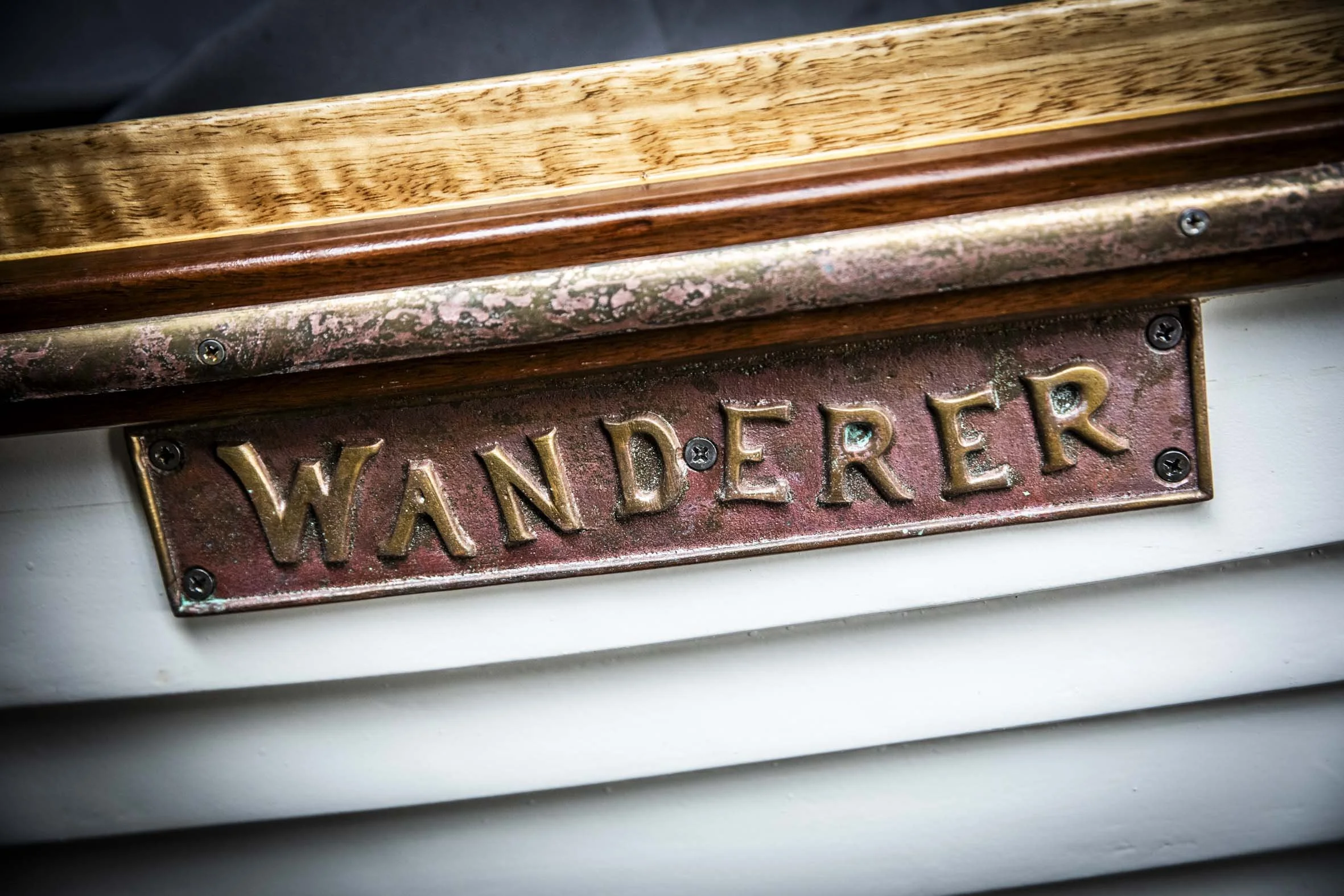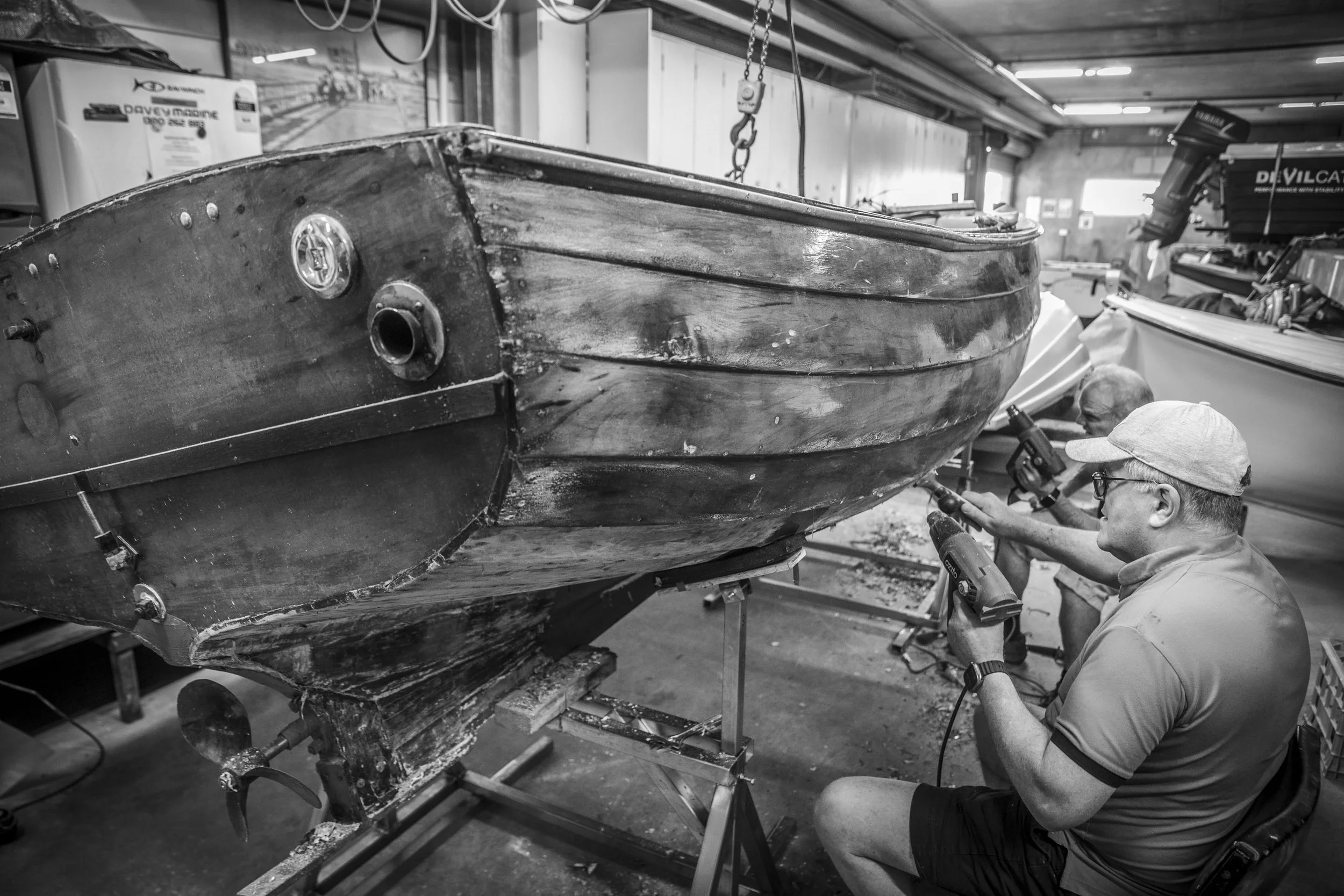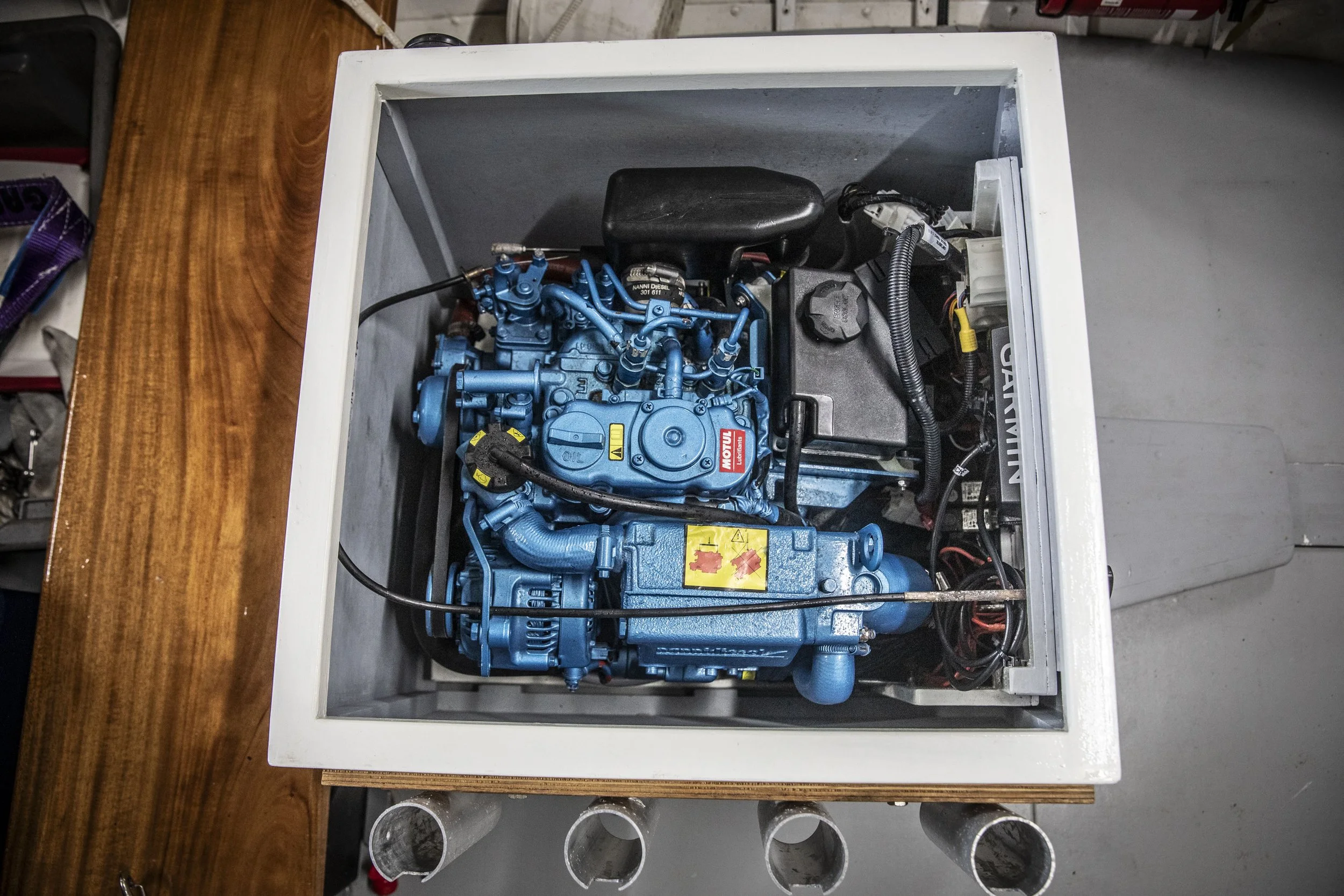“Early Talks Were Held in the Old Bandstand”
Albert Park Yachting and Angling Club. A quietly spoken success story.
A few weeks ago we were contacted by our friends at NANNI ENGINES and told of a sale they had just made to a member at the Albert Park Yachting and Angling Club on the shores of Port Phillip. Now I’ve lived and sailed in this part of the world for over 30 years, and although I’d heard of the Club, and driven past it many thousands of times, I had never been inside. So I contacted Chris Herbert, the Treasurer and he offered to show me around.
In the wooden boat world I’m always on the lookout for clues as to what makes an organisation flourish, and what makes one struggle. Depending who you talk to, its either a dying world, struggling to find young enthusiasts amongst an ageing (and dying) cohort, or its an exciting and growing community of like minded people with overlapping values of guardianship authenticity and craft. There seems to be very little in between.
Well APYAC fits firmly into the later category. They have caped the Membership at 2100 and they are fully subscribed with a waiting list. There are 53 fishing boats stored beneath the club house, which are launched with a system of hoists and rails. Its a quick and easy process. The limited storage means there is a maximun lenght of 14ft for these boats. Just under half on them are wooden, built by famous names around the Bay like Pompei, Cayzer and Savage. A few of them are over 100 years old. They run engines with names like Blaxland, Turner and Chapman Pup, and when these eventually move beyond repair the engine of choice now seems to be Nanni, with its light weight, air cooling and painless installation.
The club has a great History stretching back about 115 years.
Just after the turn of the century, ten anglers and yachtsmen in the area decided to form a club and build a boathouse.
Early talks were held in the old bandstand, which was located where the present kiosk stands today. Further meetings were held in a loft at the back of a Mrs. Gilchrist’s house in Victoria Avenue on the corner of Lt. Page Street. These early meetings resulted in a public meeting being called and to be held in the Continental Cafe at the northeast corner of Kerferd Road and Beaconsfield Pde.
The foundation members agreed to build a clubhouse and to put in £2 each to pay for timber, nails and other necessary materials. The meeting held on Thursday night, 27th March 1909, was attended by The Mayor and Councillors and a membership fee of 5/-was set.
Members also attended a meeting held on the 15th May 1909 at the South Melbourne Town Hall for the purpose of advocating a £5000 extension to the Kerferd Road Pier or to put on a T-piece to make a harbor.
The Clubhouse was built on stumps rammed into the sand and back filled with broken bricks. The floor of the club was made from hardwood flooring with a sizeable gap in the planks. During a storm many mussels were washed up under the club and after a few days the smell became unbearable. It was decided to cover the front of the building in broken brick.
For many weeks, Dill Hannerbry used his horse and cart to collect brickbats (leftovers from building sites), and place them at the front of the club. He sold his horse and drank the proceeds and then later sold his cart for the same purpose. Bill was said to be the only man in the club to drink his horse and cart.
The formal opening of APYAC, the only angling club between St. Kilda and Williamstown, took place on October 9th 1909 and about 2000 spectators attended. The club flag was hoisted and a meeting adjourned at the clubrooms where light refreshments were served. An official opening was planned for November where a hundred clubs were to be invited. Angling competitions were arranged and trips to the salt-water river (Maribyrnong) and Werribee were held. Most trips to Werribee involved a train from Spencer Street at 6.30 is. The first annual election of office bearers was held in the clubroom in Beaconsfield Pde. And over 400 members attended. It was a heavily fought election with taxis and hansom cabs conveying voters to the meeting. The election was not concluded until just on 11.00 pm. when the result was declared.
An extensive history of the club is published on their website HERE
Essentially the organisation is a fishing club, but visiting on a Wednesday morning when groups of members get together to work on and restore their craft, I realise that the custodianship of the boats and the history they embody is just as important to them as catching fish. Passing on “the knowledge” to the next generation is fundamental to their existence.
Here are some examples.
The WANDERER PA08 by Robert Pope.
It all began about this time last year just another day helping Ian Sekac working on the new club hire boats. Call it fate, destiny, kismet whatever but he happened to mention someone was interested in buying the Wanderer and I said to him if I had known It was for sale, I would Have bought it. Well with a couple of quick phone calls and an instant decision by me the deal was set in motion and the rest is history.
I have always liked working with my hands and get great satisfaction in creating something.
I restored a car 20 years ago which I have owned for 44 years it is a Volvo P1800 and fell in love with it the first time I saw it and still just look at it in wonder. The Wanderer gave me the same feeling.
I owned P28 along with Ian Sekac and Mal Manders, a fine boat but I always wanted a Pompei Boat which I thought PA08 was but how surprised I was when Mal Informed me Jack Pompei only repaired the boat and put the deck on and anchor post hence it had the Pompie look.
Apparently, the boat originated in the USA. It was a tender boat on a USA minesweeper, it was an open boat with no deck. It was visiting Tasmania during WW2. While being used the boat got stuck on a sand bar so the crew returned to the ship with intentions to retrieve it at high tide. As sometimes happens in war they had orders to sail immediately and left it behind.
Where to start, I was overwhelmed I had sold PA28 and intended to use all the proceeds on the boat but still wanted to do a bit of fishing and participate in the clinker boat race before starting the restoration. So in the meantime, I sought someone to do the timber repairs but everyone was busy so started to investigate myself.
I read up on steam bending timber as I wanted to replace the gunwales and deck rails . I made a steam box out of PVC I was told this was the way to go but unfortunately PVC softens about 95c and steam is 100c so you can imagine the result but I managed to get the job done.
The club has been great. We have been trying to get a functioning workshop happening with tools, The Club is soon going to be purchasing Festool Dust extraction and sanding units and also I have utilised the Port Phillip Men’s shed for the best range of carpentry tools. The Men’s shed has have allowed me to borrow tools to use at the club.
I have repaired the deck and inserted about 100 wooden plugs and re-corked the deck. Flipped the boat and now working on the hull.
There are a few clinker boats for sale within the club and people should not be afraid to have a go and be a part of the history of the Club. The feeling of puttering around on a fine sunny day is exhilarating.
There are 3 boats recently renovated and five under renovation by members from all walks of life, some by themselves and some by shipwrights .
Why not form a syndicate and lower the cost and the work involved.
I would anticipate another couple of months work before most of the work is complete, it will not be perfect but hopefully it will please the eye.
The Wanderer was the favourite boat of Ron Amy and I hope to do him proud.
The LANGDON Boat
This particular clinker boat has a unique history with our Club. It was built by a Mr Richard Williams circa 1940's and has been in the Langdon family for many years. The cost to David Langdon was 350 Pounds. The Langdons, David and son Phil, were both long term Presidents and are a cherished part of the club’s rich history.
In the 1960's PA25 came to grief when David and a friend were out fishing one night. A passing Scallop boat hooked their anchor, dragging the boat underwater, and tipping the occupants into the water. They were extremely lucky that their screams were heard by the Scallop boat crew who came to their aid.
The boat was in the water for some days, before being salvaged by a Mr Ireland (of the Florist family), who placed tractor tyre tubes under the boat. He inflated them which brought the boat to the surface.
The plan is to remove all the filling compounds that have been added over the years, repair the hull, stem and keel where required, and fill the gaps with two-pack flexible epoxy.
The hull will be sanded, and then treated, undercoated, and top-coated. The paint finish above the water line will be in a varnish.
It will be great to see this beautiful boat brought back to its former glory.
LARRIGAI
This historic vessel that predates the formation of Australia was built in the colony of Victoria in 1898. The 14’ foot “Flattie” was popular for line fishing at the time as it could easily be rowed and handled by one man and was inexpensive to build. At the end of the 19th century Victoria was coming out of the recession of the late 1890’s and fishing the shallows of Hobsons Bay was a popular way with no work available, to feed the family. Many boats of this style were built on the beaches of Port Melbourne lagoon, Albert Park and the new the outer suburb of Middle Park around this time. Many were amateur built out of local unsuitable timbers and only lasted a few short years
This boat was built by an experienced boat builder from very high-quality full-length knot free Kauri and King Billy Pine planking and Spotted Gum ribs. (following a Shipwreck in a storm off Williamstown A sailing ship lost its deck cargo of Kauri Pine and when a large quantity of it washed up on the Albert Park and Middle Park beach the following day was quickly grabbed by the locals. It can still be seen today in the mantles and architraves of many period houses in the area!)
“Larrigai” was built in Middle Park in Victoria by John Joseph Savage in the late 1890’s at his yard behind The Oxley Net Factory in Langridge St as a rowing boat for the shallow water fishing trade on Hobsons Bay. Savage was active at the time building wooden boats in the Middle Park area and his boats at the time were notable for their traditional vertical stems. His completed boats were launched by horse drawn trolley down the ramp at the end of Langridge St. (This ramp through the Bluestone seawall is still there today)
With its vertical stem and flat stern, the boat has quite different lines from those later 14 footers built from the mid 1920’s which were more wine glass shaped at the stern with a deep deadwood suitable for the efficient installation of an engine with a low shaft angle.
To handle the changeable weather and nasty sudden southern swells that typify Port Phillip weather, boats of the day were decked with a substantial bow deck, side decks and a low coming with integral rowlocks built into it. A three-bow igloo type canvas folding canopy was a standard fitting on the better quality boats.
Sometime in the early 1900’s PA031 became a resident boat in the Clubs Boathouse where it remained until removed for restoration in 2017. It is the oldest of the 25 or so, 14 foot clinker fishing boats dating from the 1930’s 1940’s; 1950’s and 1960’s that remain there today as an operating fleet.
During the late 1920’s the advent of inexpensive 2 stroke marine engines such as the 2 1/2 hp Chapman “Pup”, the “Simplex” and similar motors changed the face of small fishing boats forever and the ubiquitous “Putt Putt” so prevalent around the Australian coast until the 1960’s was born. In 1931 PA031 was fitted with a brand new Chapman “Super Pup” 4 ½ hp motor with a clutch. This was the top-of-the-line motor at the time. The motor remained in the boat and “operational” (just) until late 2016 when the present owner, Bob Morgan as part of the recent restoration had a new smooth running electric start 2cyl 9hp Nanni (Kubota) diesel installed. (Parts for restoring the Super Pup now being unobtainable unlike the standard Chapman Pup). The boat is fast for a boat of its type and will reach 7.5 knots one up with the NANNI in calm water. A 20 litre fuel tank and new battery is fitted.
During the restoration all original hull planking and ribs were stripped and retained. All hull fixings, copper roved, were in perfect condition and retained and 13 sister ribs installed where the originals were cracked. All deck timbers were retained, and new thwarts fitted. A multi coat paint and varnish finish finished the job. The original bronze fittings have all been retained and all new electrics fitted. The motor has done only 12 hours since installation.
Of course like all good Clubs these days the social/hospitallity side plays an important roll in providing income and servicing the Membership. The dinning room with magnificent views across Port Phillip is open to members and guests Thursday to Sunday. When you see it, you will understand their need for a waiting list!
For more information on the Club visit their WEBSITE or phone (03) 4828 9218
















